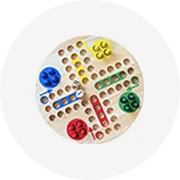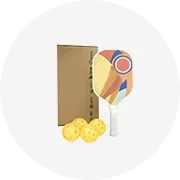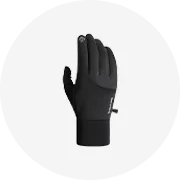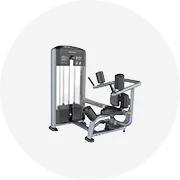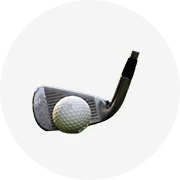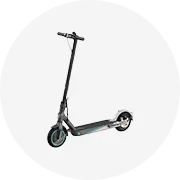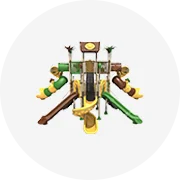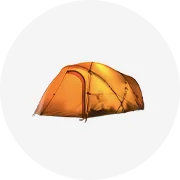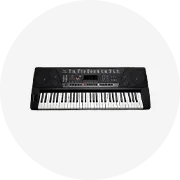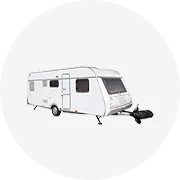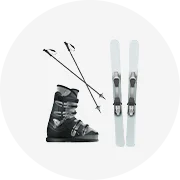Types of Go-Kart Steering Boxes
The steering system is the lifeline of any go-kart, providing crucial control over the vehicle's direction and responsiveness. While the steering wheel is the visible interface, the steering box operates behind the scenes as the heart of the system.
What does a steering box do? It converts the rotational motion from the steering wheel into the precise movements needed to turn the go-kart's front wheels. A properly functioning steering box ensures accurate handling, stability, and safety while providing essential feedback about track conditions.
Recirculating Ball Boxes
This mechanism uses circulating balls between the gear and pitman arm to reduce friction, delivering a smooth and precise steering experience.
Best for: Heavy-duty applications, vintage go-karts, and situations requiring balanced strength and precision
Rack and Pinion Boxes
Converts rotational motion into linear movement using a pinion gear that moves along a toothed rack. Compact, lightweight, and highly responsive.
Best for: Racing go-karts, sport models, and applications requiring quick directional response
Power Steering Boxes
Utilizes hydraulic or electric power to assist steering, reducing required effort especially in larger go-karts.
Best for: Larger or heavier go-karts, endurance racing, and enhancing control during tight turns
Electric Power Steering (EPS)
Eliminates traditional components in favor of a motor on the steering column shaft. Requires no belts or hydraulic fluid.
Best for: Modern go-karts, energy efficiency, and reduced maintenance requirements
Variable Ratio Steering Box
Features a changing gear ratio based on steering wheel angle, improving response and stability across different driving conditions.
Best for: Performance racing, luxury go-karts, and precision handling applications
Dual Action Steering Gear
Provides both manual and power-assisted steering options in a single unit.
Best for: Racing go-karts where drivers might prefer manual control at high speeds with power assistance available when needed
| Steering Box Type | Primary Benefits | Common Applications | Maintenance Level |
|---|---|---|---|
| Recirculating Ball | Smooth operation, durable | Heavy-duty, vintage | Moderate |
| Rack and Pinion | Responsive, lightweight | Racing, sport models | Low to moderate |
| Power Steering | Reduced effort, better control | Larger go-karts | High |
| Electric Power Steering | Energy efficient, no hydraulics | Modern designs | Low |
| Variable Ratio | Adaptive control, precision | Performance racing | Moderate to high |
| Dual Action | Versatility, control options | Competition racing | High |
Specifications and Maintenance of Go-Kart Steering Boxes
Key Specifications to Consider
| Specification | Description | Impact on Performance |
|---|---|---|
| Gear Ratio | Determines steering responsiveness; higher ratios for tight tracks, lower for long tracks | Directly affects turning speed and steering feel |
| Size & Weight | Compact and lightweight designs preferred for better performance | Affects overall go-kart weight distribution and handling |
| Material | Steel (durable), aluminum (lightweight), or nylon/composites (affordable) | Influences durability, weight, and cost |
| Mounting Options | Frame-mounted or column-mounted designs | Must be compatible with go-kart chassis design |
| Power Assist | Available in some higher-end models | Reduces steering effort, especially at high speeds |
| Price | Varies based on quality, material, and features | Balance between budget constraints and performance needs |
Essential Maintenance Practices
Regular Inspection
Frequency: Weekly
Check for leaks, damage, and loose mounting hardware. Ensure all connections are secure and components are properly aligned.
Pro tip: Pay special attention to steering box mounting points after high-impact racing sessions
Proper Lubrication
Frequency: Monthly or after 10-15 hours of operation
Use manufacturer-recommended lubricants to ensure smooth operation and prevent premature wear.
Warning: Never use contaminated lubricants, as they can accelerate component wear
Adjustment & Cleaning
Frequency: Bi-monthly or as needed
Correct alignment issues promptly; thoroughly clean to remove dirt and debris that can affect performance.
Best practice: Document baseline settings before making adjustments
Maintenance Schedule: Create a documented maintenance log for your go-kart steering box. Track inspection dates, lubrication applications, adjustments made, and parts replaced. This history helps identify patterns and predict when components might need attention before they fail.
How to Choose a Go-Kart Steering Box
Selecting the right steering box is crucial not just for performance but also for safety. Here's a comprehensive guide to making the best choice for your specific needs:
Size & Responsiveness
Smaller steering boxes provide quicker response for rapid directional changes, while larger ones offer more precise control for gradual adjustments.
Consider: Your driving style (aggressive vs. technical) and track characteristics (tight turns vs. flowing curves)
Gear Ratio Considerations
High gear ratio (slower steering) = More precise control, better stability at speed
Low gear ratio (faster steering) = Quick response, easier maneuvering in tight spaces
Typical ratios: Racing (12:1 to 16:1), Recreational (16:1 to 20:1)
| Selection Factor | What to Consider | Recommendation |
|---|---|---|
| Mounting Options | Frame compatibility, installation complexity | Choose a steering box designed specifically for your go-kart chassis type |
| Quality & Brand | Reputation, warranty, parts availability | Invest in established brands with good support and spare parts networks |
| Price Range | Budget constraints vs. performance needs | $50-150 (Basic), $150-300 (Mid-range), $300+ (Professional) |
| Driver Experience | Skill level, racing goals | Beginners: more forgiving systems; Experts: performance-focused options |
| Track Type | Surface, layout, typical speed | Match steering characteristics to your most frequent racing environment |
Warning: Never compromise on steering box quality to save money. A failure in this critical component can lead to loss of control and potential accidents. Always prioritize reliability and proper fit over price.
Decision Flowchart for Steering Box Selection
- Racing Focus → Speed-oriented tracks → Rack and Pinion or Variable Ratio
- Racing Focus → Technical tracks → Dual Action or Power Assisted
- Recreational Use → Casual driving → Recirculating Ball or EPS
- Recreational Use → Mixed driving → Rack and Pinion or Dual Action
How to DIY and Replace Go-Kart Steering Boxes
Replacing a go-kart steering box is a manageable DIY project that can significantly improve your kart's handling. Follow this comprehensive guide for a successful installation:
Tools and Materials Needed
Essential Tools
- Socket wrench set
- Ratchet
- Torque wrench
- Phillips and flathead screwdrivers
- Allen wrench set
- Vise grips and pliers
- Go-kart steering wheel puller
Required Materials
- New steering box (compatible with your go-kart model)
- Electrical tape
- Wire connectors (if applicable)
- Wiring harness (if needed)
- Power steering fluid (for power steering boxes)
- Thread-locking compound
- Quality lubricant/grease
Step-by-Step Replacement Process:
-
Safety First: Disconnect the Battery
Always disconnect the battery before beginning work on any electrical components. This prevents electrical shorts and potential injury during the replacement process.
-
Document the Original Setup
Take photos of the current steering box installation from multiple angles. Note the position of all components, connections, and hardware to ensure proper reassembly.
-
Remove the Steering Wheel
Use a steering wheel puller to safely remove the steering wheel without damaging the shaft. Remove any covers or housings that might obstruct access to the steering box.
-
Disconnect Linkages and Electrical Connections
Carefully disconnect any tie rods, steering arms, or electrical connections attached to the steering box. Label each connection if necessary.
-
Remove the Old Steering Box
Unbolt the mounting hardware that secures the steering box to the frame. Support the box as you remove the final bolts to prevent it from falling.
-
Prepare the New Steering Box
Before installation, check that the new steering box is centered and properly lubricated according to manufacturer specifications.
-
Install the New Steering Box
Position the new steering box and secure it with mounting bolts. Use thread-locking compound on the bolts and tighten to the specified torque values.
-
Reconnect All Components
Reattach steering linkages, electrical connections, and any other components that were disconnected. Ensure all connections are secure.
-
Reinstall the Steering Wheel
Align the steering wheel properly and secure it to the shaft. Replace any covers or housings that were removed.
-
Test and Adjust
Reconnect the battery and test the steering system's full range of motion. Make any necessary adjustments to ensure smooth operation and proper alignment.
Pro Tip: After installation, check the steering box alignment by measuring the distance from each front wheel to a fixed point on the frame. Both measurements should be equal when the steering wheel is centered. Make adjustments if needed to ensure proper tracking.
Safety Note: After completing the installation, thoroughly test the steering system at low speeds in a controlled environment before taking the go-kart to full racing speeds. This ensures all components are functioning properly and safely.
Frequently Asked Questions
A go-kart steering box is a mechanical system that translates the rotational movement of the steering wheel into the directional movement needed to turn the front wheels. It typically includes a set of gears or mechanisms that provide mechanical advantage, reducing the effort required to steer while ensuring precise control of the go-kart's direction.
A quality steering box provides several competitive advantages in go-kart racing:
- Enhanced Precision: Allows drivers to hit exact racing lines consistently
- Improved Feedback: Transmits vital information about track conditions and grip levels
- Better Control: Enables predictable handling even at high speeds or during aggressive maneuvers
- Reduced Fatigue: Minimizes physical effort required during extended racing sessions
- Consistent Performance: Well-designed steering boxes maintain their characteristics throughout a race
These benefits combine to produce better lap times and overall racing performance while reducing driver fatigue.
Yes, beginners can definitely use go-karts with steering boxes. In fact, a properly tuned steering box can make learning easier by providing:
- More forgiving handling characteristics
- Reduced steering effort for easier control
- More consistent feedback that helps build driving skills
- Enhanced stability that builds confidence
For beginners, look for steering boxes with moderate gear ratios (16:1 to 18:1) that provide a balance between responsiveness and stability. As skills improve, drivers can transition to more performance-oriented steering boxes.
A proper maintenance schedule for go-kart steering boxes depends on usage frequency and conditions, but generally follows these guidelines:
| Usage Level | Inspection Frequency | Full Service Interval |
|---|---|---|
| Recreational (1-2 times monthly) | Before each use | Every 3-6 months |
| Regular (Weekly use) | Weekly | Every 20-30 hours or 2-3 months |
| Competition (Frequent racing) | Before each race day | Every 10-15 hours or monthly |
Signs that immediate service is needed include: unusual steering resistance, play in the steering wheel, grinding or clicking noises, fluid leaks (in power steering systems), or inconsistent handling characteristics.
Several warning signs indicate your steering box may need replacement:
- Excessive play or slop in the steering wheel
- Inconsistent steering response or wandering at speed
- Grinding, clicking, or knocking noises when turning
- Visible fluid leaks (for power steering boxes)
- Difficulty turning the steering wheel or binding sensation
- Steering that doesn't return to center properly
- Visible damage or excessive wear on internal components
If you experience any of these symptoms, inspect your steering system thoroughly or consult a professional mechanic. Continuing to use a failing steering box can lead to dangerous loss of control.

















































